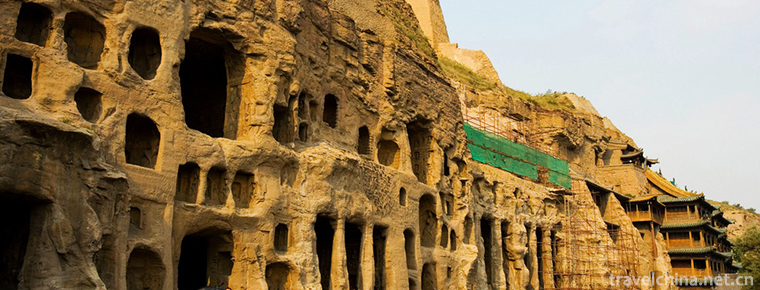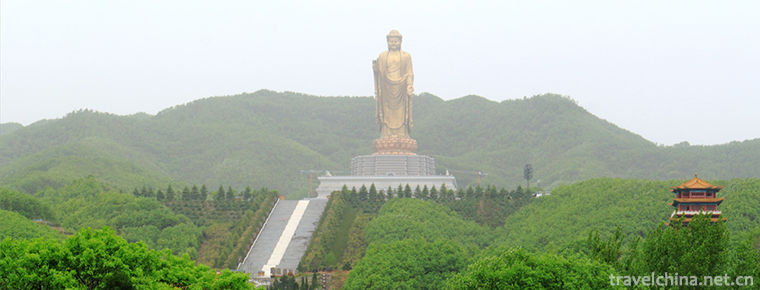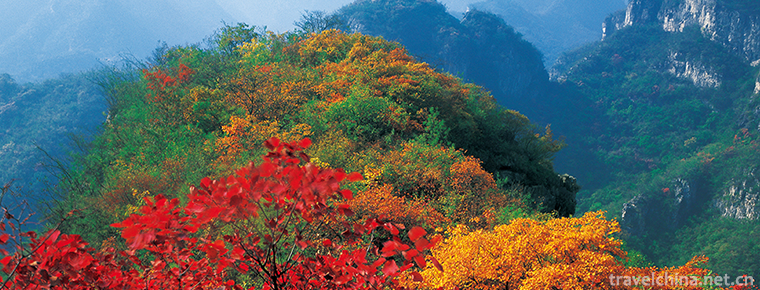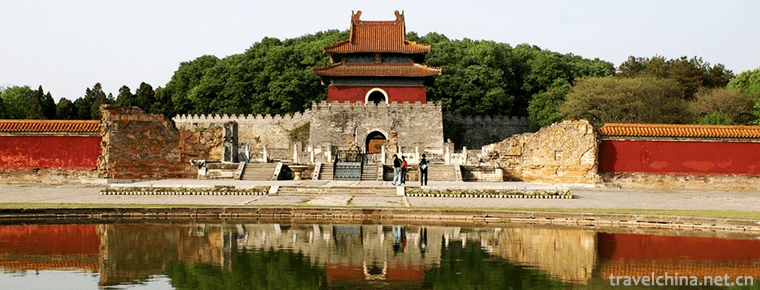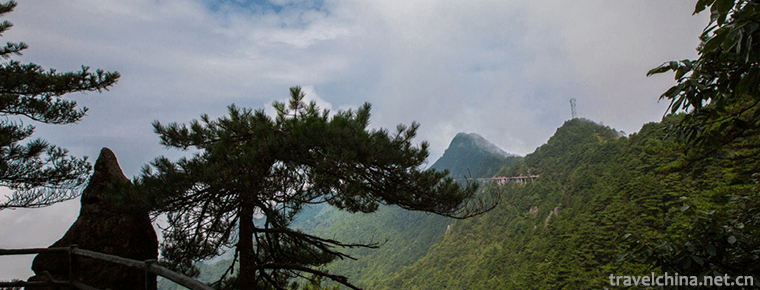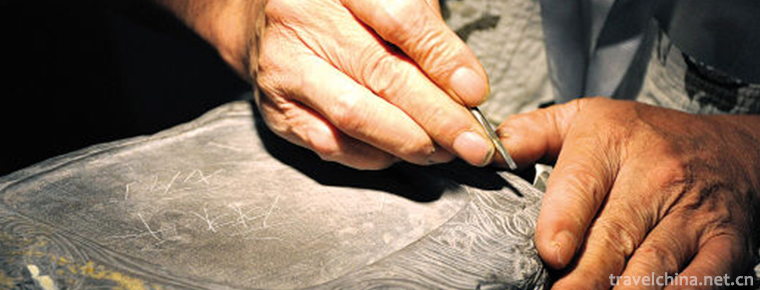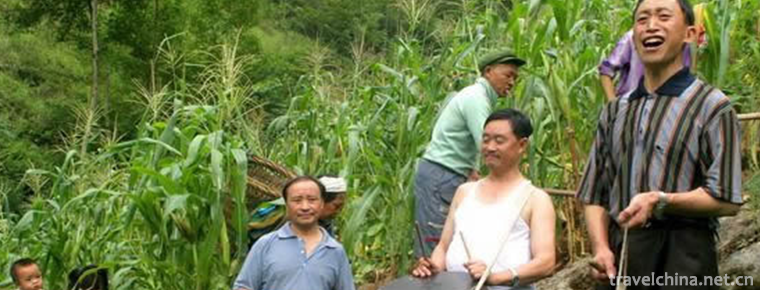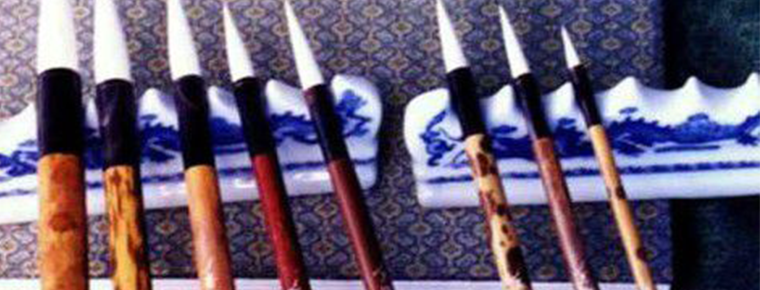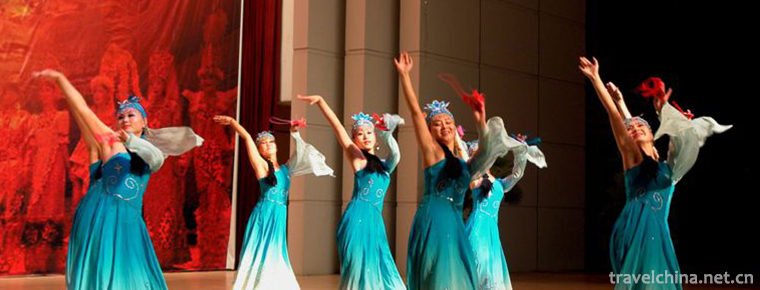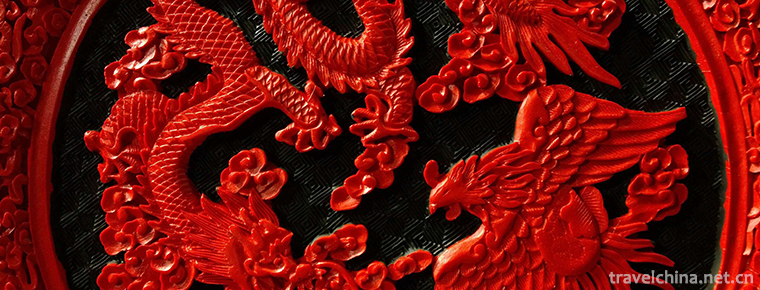Lhasa nun Ma
Lhasa nun Ma
Lhasa Bauma refers to a comprehensive music and dance art style which has a huge structure and contains poems, songs, dances and music, which is spread in Lhasa, Shigaze and Jiangzi of Tibet. The structure of "Baoma" is grand. It consists of three parts: introduction (instrumental music), song (group song) and dance music (dance music).
On June 7, 2008, the "Lhasa Bauma" declared by Lhasa City of Tibet Autonomous Region was listed in the second batch of national intangible cultural heritage list with the approval of the State Council. The serial number is 678 III-81.
historical origin
origin
There are many opinions about the appellation and origin of Bauma.
First, it is said that during the reign of the descendants of the Tibetan Emperor (the Ali Dynasty) in Ali, the Baumago dance first appeared among some local herdsmen, and then gradually spread to most parts of Ali. At the beginning of the 17th century, after calling musicians and dancers from Ali, Tibetan Badi II Karmapingcholangjie and Sisangjigatsuo gradually spread heap harmony and bagma to the areas of pre-Tibet and post-Tibet. Because the Tibetan Badi Garma Pingcholanger arranged the musicians called from Ali to perform songs and dances in his court called Senqiongkuangma, as well as the summer banquet held by Disi Sangjigatso and the sixth Dalai Cangyang Katsuo in the King Tan of Lhasa with the accompanying ministers called Gangjiakuangma, which made it a performance in the court of Senqiongkuangma.‘ The singing and dancing performances of Gang Jia Baoma's neighbours, therefore, have the title of "Baoma". That is to say, a kind of Ali folk song and dance, which originated around the 11th century, was spread to Lhasa through the Inner Court of Tibetan Badis in the early 17th century, and through Xigaze and other places. Only then did it form the title of "Bauma" and continue to use it today.
Secondly, it should be after the eighth Dalai Lama that Bauma gradually began to form and develop. "Famous folk artists from Tibetan, Han and Hui nationalities living in the ancient city of Lhasa have voluntarily jointly organized a new type of singing and dancing organization, which is called"Kuangmajido". The Tibetan language"Kuangma"means internal meaning, and"Jidu"means an organization for security and common prosperity. Later, the folk group played or sang a song, which was called "Kuangma". According to documents, the eighth Dalai Lama, Bai Jiatsuo, was pro-government in 1781 and died in 1804. By this reckoning, the age of the formation of Bauma is about the end of the 18th century, even after the beginning of the 19th century, the ancient city of Lhasa.
Thirdly, in the mid-seventeenth century, during the late Ming and early Qing Dynasties, the fifth Dalai Lama, Awan Rossangatsuo, established the rule of the Gardan Pozhang Dynasty, and Tibetan society appeared relatively stable and prosperous. During this period, a new kind of folk music and dance, mainly singing, appeared among the people of Tibetan, Han, Mongolian and Hui nationalities living in Lhasa. It is based on the ancient songs and dances of Ali (including Ladak) in the west, and integrates the tones of Han and Mongolian nationalities. Its content is mainly singing people's life and love, so it is deeply loved by the people and widely disseminated rapidly: this kind of music and dance is different from fruit harmony or heap music and recreation. It can not be performed anywhere, regardless of the venue, but indoor performance, in order to distinguish from other music and dance, known as "chamber music and dance", Tibetan abbreviated as "Kuangma".
Fourthly, according to a classical book entitled "The Modalities of Dance, Line, Music, Drum, Cymbal", there is a passage of "Music Address" with up to thirty-five titles. In the Eleventh place, it strikingly remembers the "Elephant Mang Pao Ma Ge", which means the Song of Kuang Ma in the place of the Elephant Mang Corner. The Mang Corner mentioned in it refers to the Tibetan Aliplan, later Tibetan Angren, Kualan and Nepal. Some areas bordering Er. This shows that there has been Kumar songs in Ali area for a long time. Furthermore, "according to the description of"Mako like the Mangkuang"in the book"The Tips of Dancing and Painting Drums and Cymbals"written by Indian Master Chandra Gemi, it is believed that the Kuangma originated in the Ali region of Tibet more than 1400 years ago.
Development
In the mid-17th century, relying on the power of the Qing government and Gushi Khan, the leader of Mongolian Heshuote, the Gru faction completely disintegrated the powerful forces of Gamadan in Tibetan Badi, became the dominant sect of Tibetan Buddhism, and established the local regime of Gandan Pozhang in Lhasa. Lhasa once again became the political, cultural and economic center of Tibet. During this period, Ali singing and dancing music and instrumental music, which flourished in the Tibetan-Badi period, spread to Lhasa, along with the music of Bauma. The art of Bauma was quickly popularized and developed in Lhasa, and a group of folk artists who were proficient in the music of Bauma gradually emerged, forming a certain mass base and social influence. On this basis, the mass guild organization of Bauma artists,'Bauma Jidu'(Bauma Artists Mutual Aid Association), was formed. The establishment and initiation of Baumagido marked the beginning of a flourishing period of Bauma art in Lhasa. Up to the peaceful liberation of Tibet in the 1950s, the guild organization of "Baomajidu" was still active in the ancient city of Lhasa.
artistic characteristics
basic feature
After a long period of artistic practice, especially through the inheritance, development and creation of the members of the "Baumagido" guild, Bauma has greatly enriched its artistic expression, formed a complete integrated art of singing, dancing and music, and developed into a stylized musical structure with the typical structure of prelude, Adagio and allegro. The prelude of Bauma is played by the band, which, like the appellation in heap harmony, is called "fruit sense", which means "pre-position", and is used in almost all tracks as a fixed pattern. The prelude is "Jiang harmony" - the slow-paced song, which is the core part of Bauma, mainly singing, generally without dancing; and then "autumn harmony" - happy dance, most of which do not. Singing, in sharp contrast to the slow-paced song, is a pan-fixed ending. The instrumental part of the performance is throughout, and even as an independent form can be played alone. Similar to the functions of the prelude, interlude and afterplay of heap harmony, the stereotyped fixed prelude and pan-fixed ending of Kumar also have genre significance and become an important feature to distinguish Kumar from other music genres.
form
The introduction is performed by instrumental music to prepare for the whole song. In the song part, besides the gentle Lyric singing, occasionally there are a few dance movements, such as bowing and bowing. In the part of dance music, the performers stop singing at the beginning of the dance music and dance with enthusiastic and unrestrained fast rhythm accompanied by instrumental music. As a traditional Tibetan song and dance, the accompaniment instruments of Baoma include not only Zamuni, Teqin, root string bells and other minority musical instruments, but also bamboo flute, yangqin, Beijing Hu and so on.
The basic structure of KOMA can be summarized as follows: 1.
The first is: Prelude (Fixed) - Song (Change)
The second is: Prelude (Fixed) - Song (Change) - Dance (Change) + Ending (Generalized)
The third is: Prelude (Fixed) - Song (Change) - Dance song (Change) - Chorus (Change) - Dance song (Change) + Ending (Generalization)
Inheritance significance
The instrumental ensemble form created by Danzeng Banjue not only contributed to the formation of Kuangma music, but also promoted the development of other traditional Tibetan music. For example, Tibetan folk songs and dances are in harmony. Initially, knowledge performers played Zanian Qin by hand, and they sang and danced at will. The self-entertainment songs and dances with simple musical structure were named for their origin in Ali, Tibet. Ali was known as "Xiangxiong" in ancient times, and is one of the birthplaces of Tibetan culture. When Landama exterminated Buddha, it became a haven. The descendants of the Tubo royal family and the sage monks fled to this place, where Tibetan culture was preserved and continued. The descendants of the Tubo royal family established the famous Guge Dynasty here. Up to the time of King Yixiwo of Guge (965-1036), he did not like monarchy and worshipped Buddhism. Buddhism developed here. In about 1045, Buddhism was introduced into Lhasa from here, which is called "the Great Way of Upper Road" in the history of Tibetan Buddhism. Ali's folk music was also introduced into Lhasa with Buddhism. In ancient Tibetan literature, Tibet is divided into three areas: upper, middle and lower, upper Ali, central Qianzang and back Tibet, lower Qinghai (Anduo) and Kang (Qianzang and back Tibetan are called Wei Tibet). The former Tibet refers to the area centered on the location of the Potala Palace in Lhasa, including the present Lhasa municipal district, Linzhi area, most of Shannan area and parts of Changdu area. Houzang is an area centered around the site of Zashrunbu Temple in Shigaze. The former Tibet is under the control of Dalai Lama and the latter is under the control of Panchen. Ando includes most of the Tibetan areas in Qinghai, as well as Aba in Sichuan and Gannan in Gansu. Kang District refers to Changdu area in Tibet, Yushu in Qinghai, Ganzi in Sichuan and Diqing in Yunnan. In Tibetan, the upper area of Ali has become the "pile of Ali", short for "pile of Ali". "Harmony" is a folk song. Heap up a harmonious folk song for Ali in the upper district. Maybe it was just folk singing without accompaniment at first, then accompanied by Zanian Qin, and gradually added dance movements. So far, the early performance style is still retained in the countryside of Ali and Lhasa suburbs. However, due to the influence of Danzeng Banjue's instrumental ensemble, a band accompaniment similar to Bauma music was added to the extension and dance accompaniment, and there were singing and dancing performers and instrumental performers respectively. The performers did not have to perform while singing and dancing. Both performance and performance levels were mentioned. Musically, a more complex musical structure was gradually formed to make the ensemble harmonious. Singing and dancing are becoming more perfect.
For example, as early as the 5th Dalai Lama period, the music and dance for the clouds (Gar) was stipulated that it could not be changed at will. Although Gar was the first professional singing and dancing team in Tibet, its music and dancers had to undergo strict training. But in the 18th century, after Danzeng Banjue founded the instrumental ensemble, this artistic form developed rapidly among the people of Lhasa. All kinds of bands came into being at the historic moment in aristocratic manor and folk associations, and a new vigorous situation emerged. At that time, the former royal music and dance lost its luster in the new cultural atmosphere because of the singular performance form and obsolete repertoire. Respect for the glory. Later, while retaining the original band's repertoire and style, the musicians tried to absorb the instrumental accompaniment form and accompaniment instrument in the combination of Baoma and Duiyun music and dance, so as to bring the ancient art form of Dongyun music and dance to a new life and renew its vitality. Later, in the performance, they also included Baoma song and dance in the music and dance for Yun music and dance, so as to make the festival of Dongyun music and dance. The eyes are more abundant. More importantly, it breaks through the stereotypes, lacks change, lacks the old rules of development and changes of culture.
In melody, the traditional instrumental music of the Han nationality is borrowed words, modeled and variated, which forms a more complex musical structure. The common structures of the music include: only one form of the song section; two forms with introductions (introductions-songs-dances); three forms with reproduction (dances-songs-dances), and variations. These complex structures are rarely found in Tibetan traditional music except for the music of Kuma and the heap harmony influenced by Kuma music.
The thimble technique is used in all the music. The ending tone of the Adagio (song) is the beginning tone of the Adagio (dance music). It plays a connecting role between the past and the future, and makes the paragraphs with different speed and mode blend into one. Most of the ballads are made of new materials. They are quite different from adagio in melody, rhythm and mood. They have strong contrast and prominent personality. In order to achieve coherence in tonality, parallel major and minor tunes or close relation tuning are adopted in the change of mode, which makes the music unified in strong contrast and changed in unity. The contrast and change are so natural and smooth that they are comparable to non-ordinary folk music.
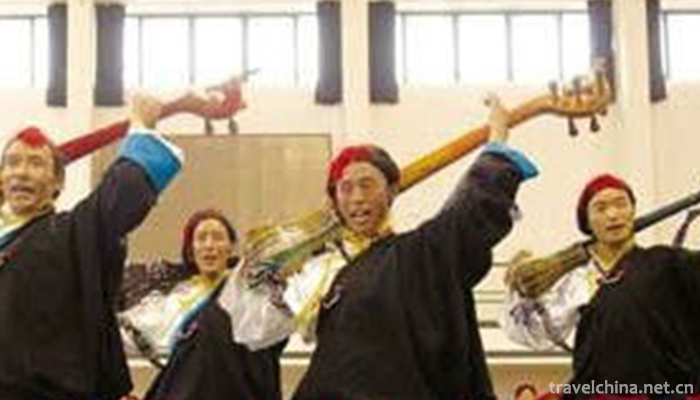
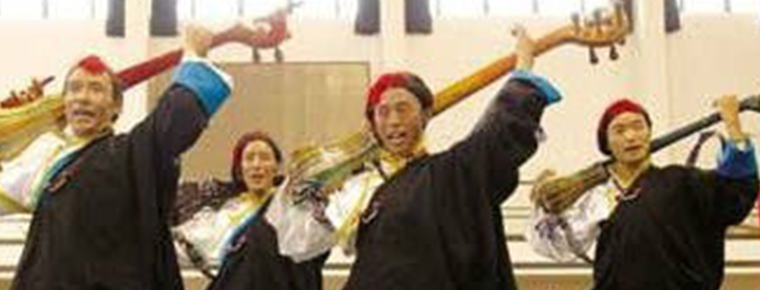
Lhasa nun Ma
-
Yungang Grottoes
Yungang Grottoes is located in the southern foot of Wuzhou Mountain, 17 kilometers west of Datong City, Shanxi Province, northern China.
Views: 272 Time 2018-11-24 -
Zhongyuan Great Buddha Scenic Area
The Central Plains Buddha, located in Shangtang Foquan Temple, Zhaocun Township, Lushan County, Pingdingshan City, Henan Province
Views: 286 Time 2018-12-09 -
Shennong Mountain Scenic Area
Shennong Mountain Scenic Area is a national AAAAA-level tourist area, located in Zhaozhai Village, Ziling Town, Qinyang City, Jiaozuo City, Henan Province, 25 kilometers northwest of the Taihang Mount
Views: 243 Time 2018-12-17 -
The Ming Toms
The Obvious Tomb is located on Chunde Mountain, 5 kilometers northeast of Zhongxiang City, Hubei Province. It was built in 1519 in Zhengde, Ming Dynasty. It was built in 1566 in Jiajing
Views: 173 Time 2019-02-07 -
Ming Yue Mountain
Mingyue Mountain Tourist Area of Yichun City, Jiangxi Province, is located 15 kilometers southwest of Yichun Central City, with an area of 104 square kilometers.
Views: 227 Time 2019-02-07 -
Duan Inkstone Production Techniques
Duan inkstone production technology, Zhaoqing City, Guangdong Province, traditional handicraft, one of the national intangible cultural heritage.
Views: 171 Time 2019-04-28 -
Grass grass drums and drums
Grass gongs and drums, also known as grass chants, are commonly known as "hilarious songs". It is a unique form of folk song art. It is a kind of Tujia folk song that the
Views: 146 Time 2019-05-02 -
Craftsmanship of Lake Pen
Hubi craftsmanship, the traditional handicraft of Shanlian Town, Huzhou City, Zhejiang Province, is one of the national intangible cultural heritage.
Views: 223 Time 2019-05-03 -
Xibo Westward Movement Festival
The Xibo people's westward migration Festival is called "418 Festival" because it is on April 18 of the lunar calendar. Because of the intention to miss relatives, also known as the Day of R
Views: 228 Time 2019-07-01 -
Yangzhou lacquerware decoration skills
Yangzhou lacquerware painting process is cumbersome, the step is "batch putty scrape gray, brush paint and push light". During the Warring States Period, Yangzhou lacquerware decoration tech
Views: 239 Time 2019-07-10 -
North China Electric Power University
North China Electric Power University is a national key university directly under the Ministry of Education. It is a key construction University of "211 Project" and "985 Project Advant
Views: 263 Time 2019-09-22 -
Huahu Lake
Huahu is located on the 213 national road between Ruoergai in Sichuan Province and Langmu temple in Gansu Province. It is a natural Haizi on the grassland of GER dam. Geer dam is the second largest grassland in China after Hulunbeir Grassland
Views: 169 Time 2020-11-07
